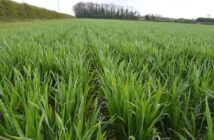Final cereal harvest estimates, released today, show that Scotland’s 2015 cereal harvest has not been the record breaker that was expected.
Initial estimates from the October Crop Report Meeting suggested 2015 would see the best cereal harvest in 20 years in terms of yields.
However, final estimates of the 2015 Scottish cereal and oilseed rape harvest – derived from the annual Cereal Production Survey and released today by Scotland’s Chief Statistician – show yields are five per cent lower than anticipated, and are largely unchanged compared to last year.
The 2015 harvest was late to start and, once underway, was halted several times by poor weather conditions, with more fields whole-cropped than usual, which is likely to have impacted on yield estimates. Long periods of wet weather prevent farmers from harvesting cereal grain, and often they will instead cut the whole of the plant and use it as animal feed. When this happens yields cannot be measured.
The area of cereals planted has fallen by four per cent – an expected reaction to crop diversification rules in the new European Common Agricultural Policy. As a result, total cereal production has also fallen by four per cent to 3.1 million tonnes, including almost two million tonnes of barley and one million tonnes of wheat.
The average overall yield for Scottish cereals is estimated at 7.0 tonnes per hectare. Yields remain high compared to those of the last 20 years but not as high as previously expected. While yield estimates have fallen, the size of the revision is not unusual. There is a typical variation between early and final harvest estimates of around five per cent.
Cereal yields range from 5.9 for spring barley to 9.3 for wheat. Oilseed rape yields are estimated at an average of 4.1 tonnes per hectare. The longer term trend of improving yields continues, with the average cereal yield for the last 10 years seven per cent higher than in the previous decade.
Scotland’s largest cereal crop, spring barley, saw a nine per cent fall in production over the year, to 1.5 million tonnes. There was also reduced production for oats, which fell to 152,000 tonnes.
Compared to last year, wheat, winter barley and oilseed rape production has increased. Wheat production is estimated at one million tonnes, the highest wheat production on record. 406,000 tonnes of winter barley were produced and 148,000 tonnes of oilseed rape.
The figures released today were produced by independent statistical staff in accordance with professional standards set out in the Code of Practice for Official Statistics. These early statistics are used to assess the economic well-being of the cereal sector and in determining impacts on the market.



